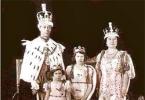Bolshaya Lubyanka street on the Yandex panorama
Street Bolshaya Lubyanka - a street in the Krasnoselsky and Meshchansky districts of the Central Administrative District of Moscow. It is located between Lubyanskaya Square and Sretensky Gate Square. The length of the street is 750 m.
Bolshaya Lubyanka Street in Moscow - history, name
In the XII-XIV centuries. the road to Vladimir-Suzdal Rus passed here. The resulting street was called Sretenka and was one street with the current Sretenka. AT mid-nineteenth in. part of the street from the center to the Boulevard Ring became known as the Bolshaya Lubyanka. At the same time Malaya Lubyanka appeared.
It is believed that in the XV century. "bast craftsmen" were resettled here from Novgorod, who made bast - linden and birch bark - dishes for food storage, boxes, purses, etc. But, judging by the documents, not ordinary artisans, but notable childbirth, which brought with them the Novgorod name Lubyanitsa, which later received the Moscow "color" - the ending "-ka".
In 1926-1991. - Dzerzhinsky Street.
Houses on Bolshaya Lubyanka
Bolshaya Lubyanka, 2/1/2 . Myasnitskaya, 1 / Bolshaya Lubyanka, 2. House "Russia".
Bolshaya Lubyanka, 11. House of the insurance company "Anchor" . In the middle of the XIX century. the house of the merchant Lukhmanov, which stood here, was bought by the Yakor insurance company. In 1879 it was rebuilt for renting out apartments. After 1917 the building was occupied by the Cheka. In 1918, N.D. was brought to Dzerzhinsky's office. Stakheev. He left it with a lifelong pension and lived to be 81 years old.
Bolshaya Lubyanka, 12/1. House "Dynamo" . Here was the estate of Prince Dmitry Pozharsky. Until 1917, the corner house was occupied by the 3rd Men's Gymnasium. In 1928-1931. in its place according to the project of I.A. Fomin built a residential building of the Dynamo sports society. Langman supervised the construction. In 1940, the upper floors of the building were transferred to the department of the NKVD, and on the first floor, gastronorm No. 40, which became known to the residents of the capital, was opened.
Among the graduates of the gymnasium are the poet Khodasevich, the writer Remizov, the historian Bogoyavlensky.
Bolshaya Lubyanka, 13/16. Houses of Tryndins . There are two houses at B. Lubyanka 13. One is located on the corner with Bolshoi Kiselny Lane, the second one overlooks Bolshaya Lubyanka. The houses were built according to the designs of A.E. Weber in 1877 and 1902-1904. commissioned by the Tryndin brothers.
The corner three-story building was occupied by shops and apartments for rent. In the early 1900s, the house was built on one floor.
The building overlooking the Lubyanka was outwardly three-story. In fact, it can be counted six floors or levels. Huge spans of lower windows cover two floors. The first one occupied the Tryndins' store, which sold optical, physical, geodetic devices, educational visual aids and medical instruments. The second, designed as the mezzanine of the store, is an auditorium for experiments with the latest physical devices. The third floor is offices. Fourth - apartments for rent. The fifth floor is the astronomical auditorium. From it a twisted ladder led to the observatory.
In 1918, the house was taken for the needs of the Cheka: it housed a club, a canteen, and so on. In 1919 the observatory was nationalized and opened to the public. In 1998, the premises of the observatory were transferred to the Ministry of the Interior, which owned the rest of the building. The equipment was dismantled, the observatory ceased to exist.
Bolshaya Lubyanka, 14. House of the Moscow Fire Insurance Company . The Baroque manor was rebuilt in the middle of the 18th century. according to the project of F.I. Camporesi. In 1811 it was acquired by Count F.V. Rostopchin. The estate survived the fire of 1812. In 1826-1842. it belonged to his son - A.F. Rostopchin.
Having changed a number of owners, the estate in 1883 passed to the Moscow Fire Insurance Company, established in 1858 by L.G. Knop, A.I. Khludov and K.T. Soldatenkov. AT Soviet time it belonged to the state security agencies, in the 1990-2000s. - various commercial organizations. In 2009, the estate became the property of the state.
Bolshaya Lubyanka, 15/17. Apartment house I.S. Romanova . The house for renting apartments was built by Kaminsky in 1887 by order of I.S. Romanova. It acquired its modern look in 1914-1915, when it was built on three floors and turned over by Ostrogradsky.
Bolshaya Lubyanka, 22/1 . Shops were located on the first floor of a two-story brick house built in 1900. One of them was the popular fish store. The second floor was occupied by apartments for rent. After 1917 the apartments became communal. In the mid-1920s, Ilf lived here in a small room. In 2002, the house was demolished, and the building of the All-Russian Volleyball Federation appeared in its place.
Human rights activist Sergei Grigoryants about a cultural heritage site damaged by Pyotr Pavlensky.
Human rights activist Sergei Grigoryants, a dissident and former political prisoner, was a defense witness at the trial in the case of actionist Pyotr Pavlensky, accused of damaging a cultural heritage site by setting fire to the doors of the FSB building on Lubyanka. Since it was about cultural heritage, Grigoryants, in his speech, emphasized that, indeed, “the building, which the accused almost damaged, is a cultural and historical monument,” and told what exactly its cultural and historical significance is. The preliminary text of Sergei Grigoryants' speech is posted on his website. "Artgid", with the permission of the author, publishes a fragment dedicated to some architectural features of the FSB building.
The very high (which, of course, will go down in Russian history) significance of today's court lies in the fact that this is the first court session in 98 years where we are talking about the relations of a giant, known under various names (Cheka, GPU, NKVD, KGB, FSB) organization and the Russian people, which is represented here by the artist Pyotr Pavlensky. Of course, Nikita Khrushchev unsuccessfully tried to destroy the KGB, dozens of trials were held, as a result of which many executioners were shot or sentenced to long terms, but these trials were closed, and today we are present for the first time at an open public trial with all its small volume. Let's hope that it will be followed by further Nuremberg-type trials of SS and Gestapo officers.
In August 1991, thousands of Muscovites came to Dzerzhinsky Square in order to express their popular attitude towards Lubyanka, smash the building and crack down on its employees. Only the demolition of the monument to Dzerzhinsky diverted the attention of thousands of people and saved the Lubyanka employees from the people's lynching. When, about a year later, this was mentioned in one of my articles in the Izvestiya newspaper, Kandaurov, a general of the KGB, answered me remarkably: “You shouldn’t have been so worried about our safety, Sergey Ivanovich, we had enough machine guns to defend ourselves.”

Buildings of the insurance company "Russia" on Lubyanka Square. Early 20th century
Now I would like to present four photographs to the court, supplementing the conclusion of the Ministry of Culture on the significance and some features of the cultural monument, which was almost damaged by the artist Pyotr Pavlensky. In the first photo there are two buildings of the Rossiya Insurance Company, still unremarkable, where the Cheka was located after moving to Moscow. In the next photo we see the rebuilt second building, which already has some special features.

Lubyanka Square. 1958-1959. Source: pastvu.com
Mr. Piotr Pavlensky and employees of the Ministry of Culture probably know that almost under the door that Pavlensky tried to damage, there were and are prison cells. Less well known is that at the back of the building there is a staircase leading up to the clock on the roof of the monument and leading to the exercise yards for the prisoners. It is they who are fenced off from the rest of the city by a strange architectural feature - a three-meter wall on the roof. And in this - in the prison, in the prison courtyards hanging over the capital of Russia - the architectural and social originality of this house lies. By the end of Khrushchev's rule, the Lubyanka was said to have ceased to be used as a political prison. One might think that all this is a thing of the past, but let's look at the next two photos of the reconstruction of our monument. One of them shows the process of architectural unification of two buildings, which was carried out in 1983 under Andropov.
Bolshaya Lubyanka Street runs from Lubyanskaya Square to Sretensky Gate Square. Its history is rich in events and spans several centuries.
Origin of the street name
There are several versions of the origin of the toponym "Lubyanka".
The name may have originated:
From the tract, the mention of which is found in chronicles in the 15th century;
From the word "lub" - inner part bark of trees and shrubs;
From the Baltic root "bast" - to clean, peel;
From the Novgorodian street Lubyanitsa: during the time of the resettlement of Novgorodians to Moscow, they renamed part of the then-called Sretenka street into Lubyanka.
Street renaming
Bolshaya Lubyanka changed its name more than once, but its original name was Sretenka, which it received in the 14th century, in honor of the "meeting" of Muscovites with. In those days, Moscow could be invaded by Tamerlane's troops, and in order to protect the city from this disaster, icon. Muscovites worshiped (meeting) the icon near the church in the name of Mary of Egypt, which was located on the territory of modern Lubyanka Street. Moscow managed to avoid the raid of Tamerlane, and the whole street was built at the meeting place and the whole street was named in honor of this event.
AT early XIX century, the street began to be called Bolshaya Lubyanka, and in 1926 it was renamed Dzerzhinsky Street. In 1991, it was returned to its former name - Bolshaya Lubyanka.
The main memorable dates in the fate of the street
Since the founding of the Sretensky Monastery, believers have been in procession along the street and square. The monastery and temples of Sretenskaya Street were very revered among the believers of Moscow and pilgrims from other cities.
In 1611, fierce battles took place on the territory of the street, the most severe and bloody of them was near the Church of the Entry into the Temple of the Most Holy Theotokos opposite the estates of Prince Pozharsky. Pozharsky himself led the attacks and was badly wounded.
In 1662, this street began " copper riot”, the turmoil that swept the whole of Moscow.
Along Sretenka Street was the famous path of M.V. Lomonosov from Kholmogory to Moscow (in 1731).
In 1748, there was a very strong fire on Lubyanka, as a result of which about 1200 houses, 26 churches burned down and about 100 people died.
The Moscow fires of 1812 did not affect the street.
In the 19th century, the street became the main trading point of the city, and by the end of the century it was completely filled with agencies of insurance companies and tenement houses.
The street suffered great losses in the 20th century. After October revolution churches in the name of Mary of Egypt and the Entry into the Temple of the Most Holy Theotokos were completely destroyed. The Sretensky Monastery lost most of its buildings and churches, was abolished, returned to the church only in 1991.
Almost the entire building at the beginning of the street was destroyed, where there were houses of church ministers, a confectionery, optical, jewelry, hunting and watch shops, etc.
Since 1920, all buildings on the even side of the street have been occupied by state security agencies. In the 1930s, large-scale construction began on a complex of existing and currently FSB buildings, which occupy an entire block. In 1979, the FSB building was built on the odd side of the street.

On the rest of the territory of Bolshaya Lubyanka Street, buildings of the 17th-18th centuries and late XIX century. There is a square on the street, formed on the site of the demolished Church of the Presentation of the Blessed Virgin Mary, it is called Vorovsky Square, there is also a monument to V.V. Vorovsky (USSR ambassador to the Scandinavian countries, killed by the White Guards in 1923).
Attractions
Bolshaya Lubyanka Street in Moscow is the place where the buildings of the NKVD and noble estates are closely intertwined, scientific institutions and monastery buildings. This is a place where almost every house is a landmark with its own destiny.
Sretensky Monastery
It was built in 1397, and in 1930 most of its buildings were destroyed to the ground. In those buildings that have survived, a school was located in Soviet times. The monastery was returned to the church only in 1991. Currently, this is a functioning monastery, on the territory of which a cross is erected in honor of the heroes of the war of 1812 and the victims of the execution of the NKVD in the 30s and 40s. The relics of the great Orthodox saints Seraphim of Sarov, Nicholas the Wonderworker, Mary of Egypt are kept in the church.
FSB building
The building was built back in 1898, one of the most beautiful and most sinister buildings in Moscow. The building was originally tenement house for an insurance agency, but during the revolution the premises were occupied by the Cheka. Later, precisely because of the location of their headquarters on Lubyanka, the street became associated with the Chekist structures and caused fear among Muscovites. Currently, the building does not look as sinister as before, but legends and rumors still circulate around it.

Manor Orlov-Denisov
This building housed the stone chambers of Prince Dmitry Pozharsky in the 16th century. AT early XVIII century, the main house was rebuilt, placing the Mint in it.
In 1811 Count F. Rostopchin became the owner of the estate.
In 1843, the mansion was bought by Count V. Orlov-Denisov (hero of the war of 1812), who rebuilt the building by adding two outbuildings.
Cathedral of the Presentation of the Icon of the Mother of God of Vladimir
The cathedral was built in the 17th century on the site of the temple (built in 1397). The cathedral was built at the expense of Tsar Fedor III in honor of the raid of Tamerlane's troops.
City estate of the architect V. I. Chagin
The building was built in 1892 and modified according to the project of the new owner - Russian and Soviet architect V.V. Chagin. The house has luxurious Venetian windows on the 1st floor, and arched windows on the 2nd. The building currently houses a restaurant and office space. The object belongs to the regional monuments of architecture.
City estate of E. B. Rakitina - V. P. Golitsyn
The building was built in the 18th century as the city estate of the Rakitins, in 1856 V.P. Golitsyn became the owner of the estate, in 1866 - P.L. Carloni, and in 1880 the Land Bank began to own the house. Yu. V. Andropov was born here in 1914.
The new building of the FSB
The new house designed by Paul and Makarevich was built in 1983. Previously, on the territory of the headquarters building were the possessions of Prince Volkonsky, then Khilkovs, Golitsyns. The new building forms a square with outbuildings, where the entire leadership of the FSB of Russia is located.
Solovetsky stone
In the fall of 1990, a memorial sign to the victims of political repression. The boulder was brought from the Solovetsky Islands, on whose territory a special purpose camp was located and where political prisoners were kept.

Former house of Lukhmanov
The building was built in 1826 by order of the merchant Lukhmanov. During the years of the revolution, the building was the headquarters of the Cheka, until 1920 F. E. Dzerzhinsky sat here. At the moment - a monument of culture.
How to get to Bolshaya Lubyanka street
Moskovskaya Street stretches from southwest to northeast, between Lubyanskaya Square and Sretenka Street. You can get to Bolshaya Lubyanka Street by metro, get off at the Lubyanka or Kuznetsky Most stations.
FSB building on Lubyanskaya Square in Moscow. 2016. Photo: Ekaterina Allenova/Artgid
Human rights activist Sergei Grigoryants, a dissident, a former political prisoner, was a witness for the defense at the trial of the accused of setting fire to the doors of the FSB building on Lubyanka. Since it was specifically about cultural heritage, Grigoryants in his speech emphasized that, indeed, “the building that the accused almost damaged is a cultural and historical monument,” and told what exactly is its cultural and historical significance. The preliminary text of Sergei Grigoryants' speech is posted on his website. "Artgid", with the permission of the author, publishes a fragment dedicated to some architectural features of the FSB building.
The very high (which, of course, will go down in Russian history) significance of today's court lies in the fact that this is the first court session in 98 years where we are talking about the relations of a giant, known under various names (Cheka, GPU, NKVD, KGB, FSB) organization and the Russian people, which is represented here by the artist Pyotr Pavlensky. Of course, Nikita Khrushchev unsuccessfully tried to destroy the KGB, dozens of trials were held, as a result of which many executioners were shot or sentenced to long terms, but these trials were closed, and today we are present for the first time at an open public trial with all its small volume. Let's hope that it will be followed by further Nuremberg-type trials of SS and Gestapo officers.
In August 1991, thousands of Muscovites came to Dzerzhinsky Square in order to express their popular attitude towards Lubyanka, smash the building and crack down on its employees. Only the demolition of the monument to Dzerzhinsky diverted the attention of thousands of people and saved the Lubyanka employees from the people's lynching. When, about a year later, this was mentioned in one of my articles in the Izvestiya newspaper, Kandaurov, a general of the KGB, answered me remarkably: “You shouldn’t have been so worried about our safety, Sergey Ivanovich, we had enough machine guns to defend ourselves.”

Buildings of the insurance company "Russia" on Lubyanka Square. Early 20th century
Now I would like to present four photographs to the court, supplementing the conclusion of the Ministry of Culture on the significance and some features of the cultural monument, which was almost damaged by the artist Pyotr Pavlensky. In the first photo there are two buildings of the Rossiya Insurance Company, still unremarkable, where the Cheka was located after moving to Moscow. In the next photo we see the rebuilt second building, which already has some special features.

Lubyanka Square. 1958-1959. Source: pastvu.com
Mr. Piotr Pavlensky and employees of the Ministry of Culture probably know that almost under the door that Pavlensky tried to damage, there were and are prison cells. Less well known is that at the back of the building there is a staircase leading up to the clock on the roof of the monument and leading to the exercise yards for the prisoners. It is they who are fenced off from the rest of the city by a strange architectural feature - a three-meter wall on the roof. And in this - in the prison, in the prison courtyards hanging over the capital of Russia - the architectural and social originality of this house lies. By the end of Khrushchev's rule, the Lubyanka was said to have ceased to be used as a political prison. One might think that all this is a thing of the past, but let's look at the next two photos of the reconstruction of our monument. One of them shows the process of architectural unification of two buildings, which was carried out in 1983 under Andropov.
Historical site of Bagheera - secrets of history, mysteries of the universe. Mysteries of great empires and ancient civilizations, the fate of disappeared treasures and biographies of people who changed the world, the secrets of special services. The history of wars, the mysteries of battles and battles, reconnaissance operations of the past and present. World traditions, modern life in Russia, the mysteries of the USSR, the main directions of culture and other related topics - all that official history is silent about.
Learn the secrets of history - it's interesting ...
Reading now
"Cossack-mason" sounds about the same as "cannibal vegetarian". It's either one or the other. Either a secret and cosmopolitan activity that does not attach importance to differences in nationality and religion, or a service open to all bullets for faith, the king and the fatherland.
Ilya Glazunov frankly told me that at the age of 16 he decided to enter a monastery. The young man came to post-war Leningrad from evacuation, left an orphan - during the blockade, he lost his father, mother, grandmother, aunt and uncle. And after a few days spent in the city, he went to the desert. But the elder monk said: “Look around, people come to us who have already lived their worldly life. You still have it ahead of you. Go and return to the world. Find the strength in yourself to live. Later Glazunov often recalled these words. And many times I searched for strength - to live.
In the first official reports about the arrest of Beria, which appeared on June 26, 1953, the charges were formulated quite standardly - "wrecking", "espionage", "conspiracy".
Around the end of the second millennium BC, the inhabitants of the eastern Mediterranean learned how to cook and process iron. After the dominance of bronze, this was a real military progress. The swords were not so heavy, and the blades did not break from a strong blow.
Svetloyar is one of the most mysterious lakes in Russia. Researchers have been studying it for half a century and still have not come to an agreement on the origin of Svetloyar. The water of the lake is also unusual - it can be stored for many years, and it will not lose its purity and taste. In the area of this reservoir and its environs, anomalous phenomena are observed more often than in other places. Finally, the famous legend about the city of Kitezh, which suddenly sank to the bottom of the lake, is connected with Svetloyar.
In scientific articles and field reports devoted to annual archaeological research, one can occasionally find ancient burials that stand out sharply from similar sites.
The legends of antiquity say that Polycrates, the tyrant of Samos, was an unusually lucky person. Superstitious friends urged Polycrates to sacrifice something expensive in order to propitiate the envious gods. Then Polycrates threw a precious ring into the depths of the sea. But a few hours passed, and, having cut the freshly caught fish, the king's servants took out their master's ring from its stomach. Seeing this, the friends were horrified and hurried to leave the court of Polycrates, because sooner or later such happiness was to be replaced by great misfortunes. Later, this ring, according to Pliny the Elder, was kept for many years in the Temple of Concord in Rome.
On August 18, 1847, about one o'clock in the morning, terrible news spread throughout Paris. At dawn, the Duchess de Choiseul-Pralin, daughter of Marshal Sebastiani, minister and ambassador of King Louis Philippe, was stabbed to death in her house in the Faubourg Saint-Honoré.




